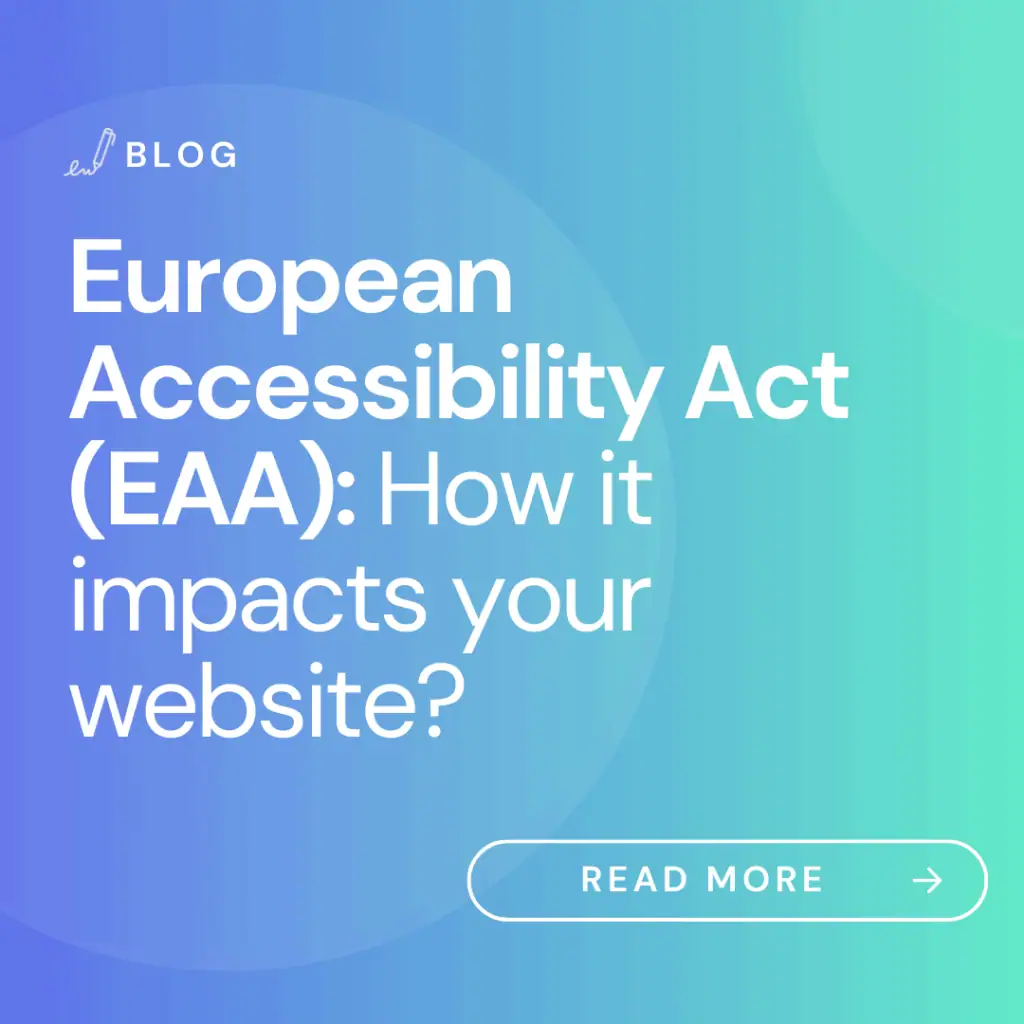

Nowadays, anyone who runs a business also has a website. But did you know that very soon, all websites will need to be accessible and easy to use for everyone—including people with disabilities? If you haven’t yet heard of the European Accessibility Act (EAA), this article is for you!
The European Accessibility Act (EAA), also known as Directive 2019/882, is a European regulation designed to ensure that all citizens—including those with disabilities—can access digital products and services without barriers.
In Spain alone, over 4.3 million people live with some form of disability. On top of that, internet use among older adults is becoming more and more common. That’s why making digital platforms accessible is not only a legal obligation, but also something essential in today’s society.

Spain has already incorporated this European regulation into national law through Law 11/2023, passed on May 8th, which includes the EU rules on digital accessibility. This law ensures that certain products and services are accessible to all individuals, including people with disabilities.
However, private companies have until June 28, 2025, to fully comply with digital accessibility requirements.
Additionally, there’s a transitional period until 2030 for digital products and services that were already on the market before the law came into effect.
European lawmakers are clear: for a level playing field, everyone must play by the same rules. That’s why all companies and member states are subject to the same obligations. The affected products and services include:
So, if your company offers any of these products or services, make sure they are accessible before the deadline!
Microenterprises (those with fewer than 10 employees and an annual turnover or total balance sheet under 2 million euros) are exempt and not required to comply with this law.
This regulation means a significant redesign of your website to meet basic accessibility requirements, such as:
After the deadline (June 2025), any entity not complying with web accessibility will face important fines. You’ll also be required to resolve the issue within a specific timeframe—otherwise, further fines may apply.
Not necessarily. The EAA includes additional requirements because it’s based on UNE EN 301549, not just the WCAG. These extra points cover things like multimedia players (including access to live content), two-way communication tools (like video conferencing), and biometric systems (like facial recognition), for example.
The European Accessibility Act is a positive step towards making the internet accessible for everyone, regardless of disability. Adapting to it is not only mandatory, but also good for your business.
At Lawwwing, we want to help you comply with this regulation simply and stress-free. Get in touch with us and make your website accessible for all!